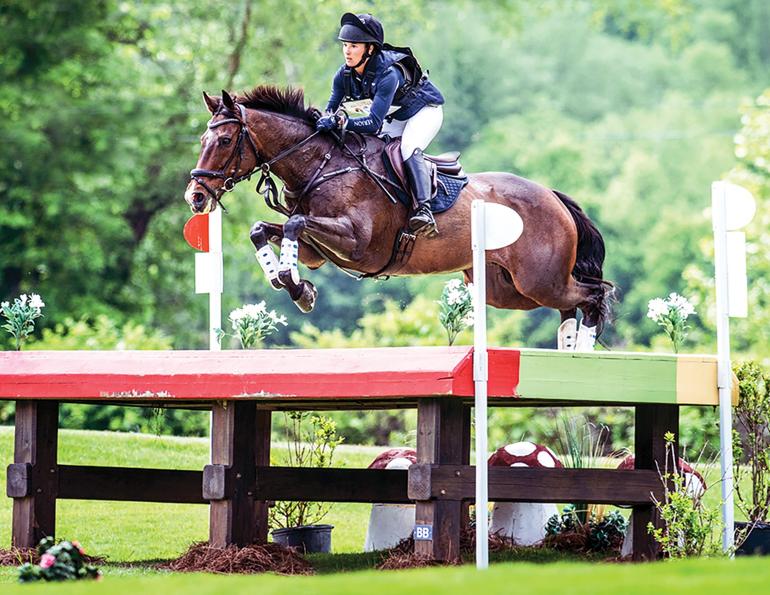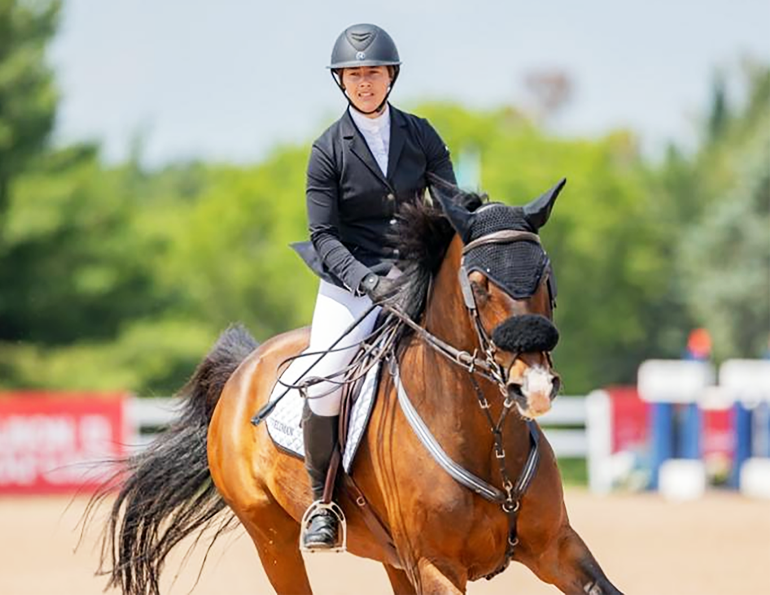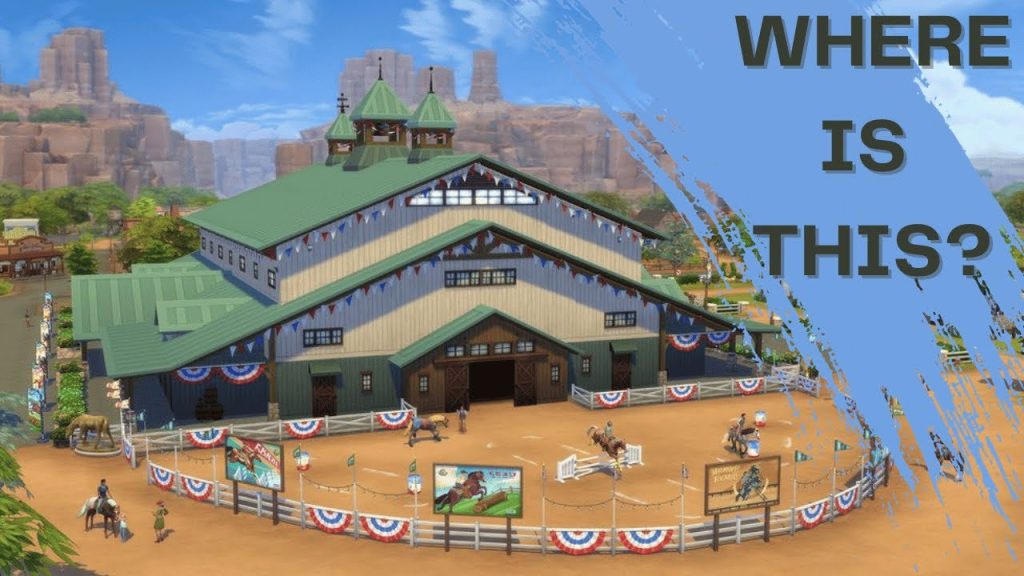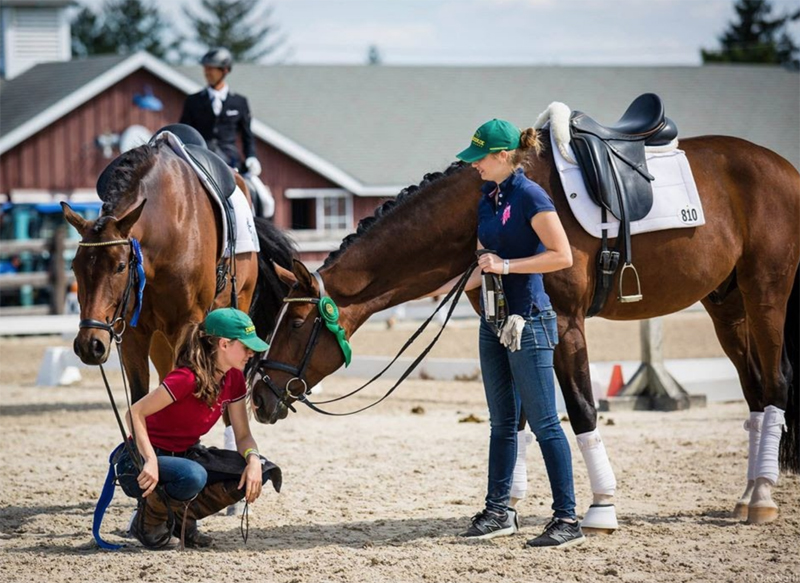Dreaming of becoming a professional equestrian rider? It takes skill, dedication, and passion.
Equestrian riding is more than just a hobby; it’s a lifestyle. To transform this passion into a profession, you need the right training, mindset, and opportunities. This guide will walk you through the steps to becoming a professional equestrian rider.
From mastering the basics to competing at high levels, each stage is crucial. Whether you’re starting from scratch or looking to refine your skills, this journey requires commitment and perseverance. By following these steps, you can turn your love for horses into a rewarding career. Let’s explore the path to becoming a professional equestrian rider and make your dreams a reality.
Introduction To Equestrian Riding
Equestrian riding is a thrilling and rewarding sport. It requires dedication, skill, and a deep connection with your horse. Whether you’re new to the sport or looking to advance your skills, understanding the basics is essential.
Riding a horse involves more than just sitting in the saddle. It requires proper training, physical fitness, and mental focus. Let’s explore the key elements that contribute to becoming a professional equestrian rider.
Importance Of Proper Training
Proper training is the foundation of successful equestrian riding. Without it, riders can develop bad habits that are hard to break. Training with a qualified instructor helps you learn the correct techniques from the start.
Good training also ensures the safety of both rider and horse. Riding can be dangerous if not done correctly. An experienced trainer teaches you how to handle different situations safely.
- Learn correct posture
- Understand horse behavior
- Develop riding techniques
Training sessions should be regular and consistent. This helps build muscle memory and confidence in your riding abilities.
Physical And Mental Benefits
Equestrian riding offers numerous physical and mental benefits. Riding a horse is a great workout. It improves balance, coordination, and core strength. It also helps with flexibility and posture.
Mentally, riding can be very rewarding. It requires focus and discipline, which can improve your mental health. Working with horses can be therapeutic. It reduces stress and anxiety and boosts your mood.
| Physical Benefits | Mental Benefits |
|---|---|
| Improves balance | Reduces stress |
| Enhances coordination | Boosts mood |
| Builds core strength | Increases focus |
| Promotes flexibility | Encourages discipline |
By understanding these benefits, you can appreciate the value of equestrian riding. It is not just a sport but a way to improve your overall well-being.

Credit: www.horsejournals.com
Choosing The Right Horse
Choosing the right horse is crucial for becoming a professional equestrian rider. A good horse can make a huge difference in your riding experience. Let’s explore what you need to know.
Breeds Suitable For Riding
Not all horse breeds are suitable for riding. Some are better for different types of riding activities. Thoroughbreds are known for their speed and stamina. They are great for racing and jumping. Quarter Horses excel in short-distance racing and have strong, muscular bodies. Warmbloods are often seen in dressage and show jumping. They are calm and athletic. Each breed has its strengths.
Evaluating Horse Temperament
Temperament plays a big role in a horse’s suitability for riding. A calm and friendly horse is easier to handle. Look for a horse that does not get easily scared. Watch how the horse reacts to new situations. A good riding horse should be curious but not overly excitable. Spend time with the horse before making a decision. Your horse should be a good match for your personality and skill level.
Essential Riding Gear
Becoming a professional equestrian rider requires not only skill but also the right gear. The correct equipment ensures your safety, comfort, and performance. Let’s look at the essential riding gear you need for your journey to becoming a professional equestrian rider.
Safety Equipment
Safety should be your top priority. Wearing the right safety equipment can prevent serious injuries.
- Helmet: A certified riding helmet protects your head from falls and impacts.
- Body Protector: A body protector shields your torso during jumps and falls.
- Riding Boots: Boots with a low heel prevent your feet from slipping through the stirrups.
- Gloves: Riding gloves provide a better grip on the reins and protect your hands.
Comfort And Functionality
Comfort and functionality are crucial for long rides and training sessions. The right gear can make a huge difference in your performance.
| Item | Function |
|---|---|
| Riding Breeches | Designed for comfort and flexibility. Helps you maintain a proper riding position. |
| Riding Shirt | Breathable and moisture-wicking. Keeps you cool and dry. |
| Saddle | Provides support and balance for both rider and horse. |
| Bridle | Helps in controlling the horse. Essential for communication between rider and horse. |
Investing in good quality riding gear not only improves your performance but also ensures your safety and comfort during rides.

Credit: horseridinghub.com
Training And Skill Development
Training and skill development are essential for becoming a professional equestrian rider. This journey requires dedication, patience, and consistent practice. Learning the basics lays a strong foundation. Mastering advanced techniques refines your abilities.
Basic Riding Techniques
Start with basic riding techniques. These include mounting, dismounting, and proper posture. Practice maintaining balance while riding. Learn to control your horse with gentle cues. Master the correct way to hold the reins. Focus on building a bond with your horse.
Work on developing a strong seat. This helps you stay secure in the saddle. Practice trotting and cantering. These are fundamental gaits for every rider. Learn to post during the trot to stay comfortable. Consistency in practice is key.
Advanced Maneuvers
Once you are comfortable with the basics, move to advanced maneuvers. Learn to perform flying lead changes. This skill is crucial for jumping and dressage. Practice lateral movements like leg yielding and shoulder-in. These help in improving horse flexibility.
Perfect your jumping techniques. Start with small jumps and gradually increase height. Focus on approach, takeoff, and landing. Work on dressage patterns. This involves precise movements and control. Advanced maneuvers require patience and repeated practice.
Building A Training Routine
Creating a structured training routine is crucial for becoming a professional equestrian rider. A well-planned schedule helps you improve your skills, stay consistent, and track your progress. In this section, we will discuss how to build an effective training routine with a focus on daily practice and tracking your progress.
Daily Practice Schedule
A daily practice schedule is essential for developing your riding skills. Consistent practice helps you build muscle memory and improve your technique. Here’s a sample daily practice schedule to get you started:
| Time | Activity |
|---|---|
| 6:00 AM | Warm-up and stretching |
| 6:30 AM | Riding drills |
| 7:30 AM | Cool down and review |
| 8:00 AM | Horse care and feeding |
Warm-up and stretching prepare your body for riding and prevent injuries. Riding drills focus on specific skills such as jumping, dressage, or cross-country. Cool down and review help you reflect on your session and identify areas for improvement.
Tracking Progress
Tracking your progress is vital to understand your growth and areas that need work. Keeping a training journal can be very effective. Here are some tips on how to track your progress:
- Set specific goals: Define what you want to achieve in each session.
- Record your sessions: Write down what you did, how you felt, and any challenges.
- Review regularly: Look back at your journal to see improvements and setbacks.
- Adjust your routine: Based on your progress, tweak your schedule to focus on weaker areas.
For example, if you notice that your jumping technique needs improvement, allocate more time to practice jumps. Adjusting your routine based on your progress ensures continuous development.
By setting a daily practice schedule and tracking your progress, you can effectively build a training routine that helps you become a professional equestrian rider.

Credit: www.youtube.com
Participating In Competitions
Participating in competitions is a vital step in becoming a professional equestrian rider. These events test your skills, build your reputation, and provide valuable experience. Whether you aim to compete locally or internationally, understanding the process and preparation is essential.
Types Of Equestrian Events
There are many types of equestrian events. Show Jumping focuses on horse and rider clearing obstacles. Dressage tests precision, rhythm, and harmony between horse and rider. Eventing combines dressage, cross-country, and show jumping. Each event requires specific skills and training.
Preparing For Shows
Proper preparation is key to success in competitions. Start with a consistent training schedule. Focus on both horse and rider fitness. Ensure your horse is healthy and well-groomed. Practice routines and familiarize yourself with the competition rules. Attend local shows to gain experience and confidence.
Don’t forget the paperwork. Register for events early and ensure all documents are in order. This includes health certificates and entry forms. Arrive early at the event to settle in and reduce stress. Walk the course and understand the layout. This helps in planning your strategy for the competition.
Stay calm and focused. Your mindset affects your performance and your horse’s behavior. Visualize success and stay positive. Always be ready to learn from each event. Take notes on your performance and seek feedback. This helps you grow and improve for future competitions.
Maintaining Horse Health
Maintaining horse health is essential for any professional equestrian rider. A healthy horse performs better and has a longer, happier life. This section covers key aspects of maintaining horse health, including regular veterinary care and proper nutrition and exercise.
Regular Veterinary Care
Regular veterinary care is crucial for keeping your horse in peak condition. Schedule routine check-ups to monitor your horse’s overall health. Vaccinations are important to prevent diseases. Deworming helps control parasites that can affect your horse’s health.
Here is a simple schedule to follow:
- Annual Check-ups: General health assessment, dental check, and vaccinations.
- Bi-annual Deworming: To keep parasites at bay.
- Emergency Care: Always be prepared for unexpected injuries or illnesses.
Nutrition And Exercise
Proper nutrition and regular exercise are vital for a horse’s health. A balanced diet provides the necessary nutrients. Consult with a vet or equine nutritionist to create a tailored diet plan.
| Nutrient | Source |
|---|---|
| Protein | Forage, commercial feeds |
| Carbohydrates | Grains, hay |
| Fats | Oils, seeds |
| Vitamins | Fresh forage, supplements |
| Minerals | Salt blocks, supplements |
Exercise is equally important. It keeps your horse fit and happy. Follow a consistent training routine. Vary the exercises to avoid boredom and overuse injuries.
- Warm-up: Start with light walking or trotting.
- Training: Include a mix of dressage, jumping, and trail riding.
- Cool down: End with a slow walk to relax muscles.
Remember, both overfeeding and underfeeding can be harmful. Monitor your horse’s weight regularly. Adjust the diet and exercise routine as needed.
Networking And Finding Mentors
Networking and finding mentors are crucial steps in becoming a professional equestrian rider. Building a supportive community helps you learn and grow. Networking opens doors to opportunities and guidance. Mentors provide valuable advice and support. Let’s explore how to connect with the right people.
Joining Equestrian Clubs
Joining equestrian clubs is a great way to meet like-minded individuals. These clubs often host events, competitions, and training sessions. Being part of a club helps you stay updated on industry trends.
- Attend local and national events
- Participate in club activities and meetings
- Volunteer for club-organized events
Active participation increases your visibility. It shows your dedication to the sport. This can lead to valuable connections and friendships.
Connecting With Experienced Riders
Experienced riders have a wealth of knowledge to share. Connecting with them can offer insights into training techniques and career advice. Here are some ways to connect:
- Attend workshops and clinics
- Engage in online equestrian forums
- Request informational interviews
Showing genuine interest and respect for their experience is key. Experienced riders can become mentors, offering guidance and support throughout your career.
| Method | Description |
|---|---|
| Workshops and Clinics | Learn directly from experts in hands-on sessions. |
| Online Forums | Engage with the community and ask questions. |
| Informational Interviews | Gain personal insights and build relationships. |
Networking and finding mentors are essential for growth. These connections provide support and open new opportunities. Start building your network today for a successful equestrian career.
Career Opportunities In Equestrian Sports
Career opportunities in equestrian sports are diverse and rewarding. Whether you dream of riding professionally or contributing in other ways, the industry offers many paths. From competing at top levels to supporting roles, there’s something for everyone.
Professional Riding Careers
Professional riding careers include show jumping, dressage, and eventing. These riders train and compete in various competitions. They aim to achieve high rankings and win prestigious titles. Becoming a successful rider takes years of dedication and practice. Many start as young riders and gradually build their skills.
Some professional riders also work as trainers. They teach others how to ride and compete. This role combines riding skills with teaching abilities. Trainers can work with beginners or advanced riders. They help students improve their techniques and confidence.
Other Roles In The Industry
There are many other roles in the equestrian industry. Stable managers oversee the care of horses and facilities. They ensure the horses are healthy and well-fed. This job requires knowledge of horse care and management.
Equine veterinarians play a vital role too. They provide medical care to horses. They treat injuries, perform surgeries, and offer preventive care. Becoming a vet requires extensive education and training. It’s a demanding but rewarding career.
Farriers are specialists in horse hoof care. They trim and shoe horses’ hooves. This job requires skill and precision. Farriers help maintain the health and performance of horses.
Equestrian photographers and journalists capture and report on events. They share stories and images with the public. Their work helps promote the sport and inspire future riders.
Conclusion And Final Tips
Becoming a professional equestrian rider is a challenging journey. It requires dedication, hard work, and constant learning. Here are some final tips to help you stay on track and achieve your goals.
Staying Motivated
Staying motivated is crucial for success. Set small, achievable goals. This keeps you focused and gives a sense of progress. Celebrate your small victories. They add up over time.
Surround yourself with supportive people. They can provide encouragement and advice. Join a riding club or community. Being part of a group can boost your motivation and morale.
Continuing Education
Always keep learning. The equestrian world is always evolving. Attend workshops and seminars. They offer new techniques and ideas.
Read books and articles about riding. Watch videos from expert riders. Learning from others can provide valuable insights.
Take lessons from experienced trainers. They can offer personalized guidance and help you improve. Never stop seeking knowledge. It is key to becoming a better rider.
Frequently Asked Questions
What Skills Are Needed To Be A Professional Equestrian?
To be a professional equestrian, you need excellent riding skills, strong communication with horses, and physical fitness.
How Long Does It Take To Become A Professional Rider?
Becoming a professional equestrian can take many years. It depends on dedication, practice, and training quality.
What Are The Steps To Start An Equestrian Career?
Start with basic riding lessons, participate in competitions, and get professional training to advance your skills.
How Important Is Horse Care Knowledge In Equestrian Riding?
Horse care knowledge is crucial. It ensures the horse’s health, performance, and a strong rider-horse relationship.
Conclusion
Becoming a professional equestrian rider takes dedication and consistent practice. Care for your horse. Build a strong bond. Learn from experienced trainers. Stay fit and maintain a healthy lifestyle. Set achievable goals. Celebrate small successes. Keep improving your skills. Stay patient and persistent.
Enjoy the journey. With time and effort, you’ll reach your dreams. Happy riding!



